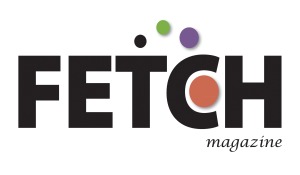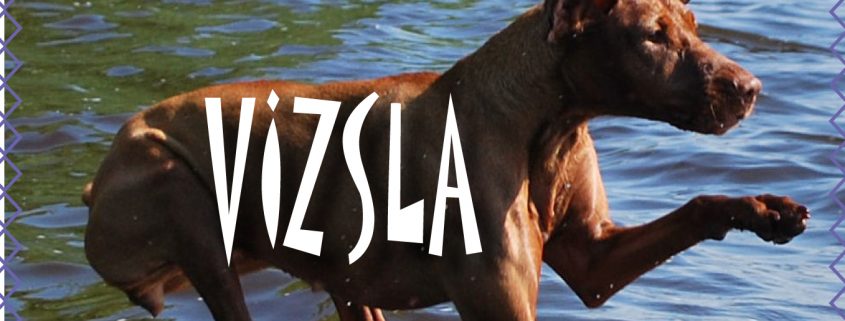By NASTASSIA PUTZ, Freelancer
Nearly facing extinction during World War II due to thousands of Hungarians fleeing their homeland and leaving their dogs behind, Vizslas have survived and flourished. It is thanks to those few individuals that took their dogs with them during wartime. Today, the Vizsla is a well-recognized breed, noted for hunting and canine competition in the United States and has been re-established in Hungary as the national dog.
Brief Background/Facts: Vizslas (a Hungarian word that means “pointer”) were hunters and companions to the nomadic Magyar tribes and were selectively bred by Hungarian noblemen. They arrived in the US in the early 1950’s and the Magyar Vizsla Club of America (known today as the Vizsla Club of America Inc.) was established in 1953. As part of its foundation stock, the American Kennel Club recognized the breed in 1960.
Today: According to the VCA, the Vizsla is one of the top three breeds used by the Transportation Security Administration. They worked in Search and Rescue at 9/11 and are used successfully in Seeing Eye programs.
Breeder and President of the Central Wisconsin Vizsla Club Rebecca Smith has handled over 40 Vizsla fosters in her home and has taken care of her own Vizslas since 1991.
With over 15 years of breed experience, she and her husband Mark have produced 8 litters, participated in conformation, field trials, hunt tests, limited obedience and agility and rally. Rebecca loves conformation and Mark is an enthusiast for the field trials. Having no two-legged children of their own, Rebecca says her dogs are her kids, and having an active lifestyle with these versatile pooches is comparable to having kids in multiple sports.
“If someone wants a dog that is going to be their best buddy, prefers to be close to them all the time (if not on top of them), is athletic and smart, the Vizsla would be a good choice,” says Rebecca. Also, Vizslas “are able to participate successfully in many activities…”
Ownership Pros & Cons: Besides their beautiful appearance, Rebecca notes, “They are a 50-pound lapdog … It is rare that I sit down to watch TV or work on the computer that I do not have a Vizsla sharing my chair or sitting in my lap.”
This is a trait she adores, but for some it may be a nuisance. Another potential bothersome trait may be their thought process. For a Vizsla it’s “Let’s go hunting,” as opposed to “Many other pointing breeds … which seem to think ‘I’m going hunting’ and ‘you keep up’.” So “… when you are hunting with a Vizsla, they may go out quite a long way [on their own] however, they will always check back to see where you are.” They are a bit needy and softer in temperament. A pro or con depending on the personality of the owner, she notes.
They do shed but not as much as a longhaired dog and are low maintenance when it comes to grooming. Brush their teeth, clean their ears, trim their nails and “they are good to go,” notes Rebecca. She suggests not bathing them more than quarterly unless they get into something undesirable.
The High Maintenance Aspect: Being athletic and active dogs, they require a good amount of exercise. “If you are not planning on exercising your dog on a regular basis, do not get a Vizsla,” Rebecca says. If they don’t get exercise or have a “job” they tend to act out. Her dogs run free for at least 30 minutes a day to burn off that extra energy. “Vizslas tend to be diggers, chewers and counter-surfers. I’ve seen more than one couch or chair ruined by a Vizsla … they are not content lying around the house.”
Highly Trainable & Intelligent: As for training, they need to use their brains. But, “You need to go easy with a Vizsla … and not push too hard,” she confirms. Rebecca advocates positive reinforcement and further states, “If pushed too hard, they will simply shutdown.” On the bright side however, “they are quick to learn things and want nothing more than to please you.” And “they are ‘wicked smart’,” she continues. Her favorite memory is about her dog Jennie who could open “ANYTHING.”
“We kept [a deli bucket with treats] underneath the basement steps. Every time I would go down in the basement, Jennie would follow me and open the deli bucket and help herself to a chew bone. I sometimes had a hard time getting deli buckets open, but she didn’t!”
Playing Nice with Others: First and foremost, they have a notable “prey drive”, and “as a rule, Vizslas are good with other dogs and animals, but remember they are hunting dogs,” says Rebecca.
As far as children are concerned, “… dogs are dogs, and I try not to leave the kids and dogs alone together,” says Wendy Kempfer, Vizsla breeder, owner and handler. However, “… our Vizslas are great with children.”
Wendy is also an active member of the Central Wisconsin Vizsla Club and mother of two young boys, Sully, 3 and Sebastian, 6. “I work hard to try to teach my boys how to behave around dogs as well as teaching the dogs how to behave around kids,” she notes.
Dogs are individuals and will each act differently around children. Wendy’s three dogs each respond and react to her kids in their own unique way. Brody is “super tolerant and accepts it all” yet gives them space. Lexis wasn’t raised around kids and tends to be grumpy and growl at them, so she stays away. And then there is Gracie, the puppy. Gracie loves them and wants to play with them constantly. Sometimes too much and they get jumped on and end up crying in the process.
Even though she finds having dogs (especially Gracie) and kids a challenge at times, she wouldn’t change a thing. “You have to be willing and able to commit as much time to that puppy as you do to your children.”
Final Decision: Just like with any dog or breed, the Vizsla may not be a good fit for everyone and Rebecca stresses visiting a Vizsla in their home environment prior to making a long-term commitment. “They [the potential owner/adopter] need to plan on spending a couple of hours with the dogs so they can see what they are really like, and maybe visit more than once.”
Also, if getting one from a breeder, “… choose a breeder that you like as a person, someone you feel you could be friends with as that breeder should be there to offer advice and help you for the entire life of the dog, not just until you take it out the door,” insists Rebecca.
Note: Rebecca and Mark Smith currently reside outside of Fall River, Wis. and have three Vizslas of their own while co-owning a number of them with friends. “It’s sort of like having grandchildren. We get the benefit of the fun but the dogs live somewhere else.”
Anyone interested in breed rescue should visit cwvc.org. There is a form on the website to fill out in order to adopt a Vizsla and/or surrender forms if someone wants to turn one into rescue.
Homeland: Hungary, nearly faced
extinction, but today is the national dog!
Size: Males are 22-24 inches, Females are 21-23 inches.
Appearance: Golden rust color (various shades), minimal white markings on chest, medium-sized, short-coated athletic body.
Job: Originally bred to work/hunt in field, forest & water. Today, very versatile
in all areas of canine competition.
Temperament: Energetic, natural hunter
yet devoted family companion.


